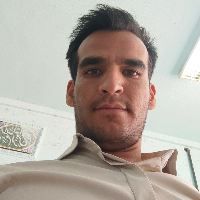The effect of 8 weeks of high-intensity swimming interval training on the factor level of Erythroid-Derived 2-nuclear Factor 2 (Nrf2) and Superoxide Dismutase (SOD) in obese male rats with Non-alcoholic Steatohepatitis
With the increase of inactivity in today's modern world, many metabolic diseases caused by lack of physical activity have spread. Among these diseases, we can mention non-alcoholic steatohepatitis, which is associated with increased oxidative stress. This study aimed to investigate the effect of 8 weeks of high-intensity swimming interval training on the factor level of Erythroid-Derived 2-Nuclear Factor 2 (Nrf2) and superoxide dismutase (SOD) in obese male rats with non-alcoholic Steatohepatitis (NASH).
At the beginning, rats aged 6 to 8 years were randomly divided into healthy (n=20) and sick (high fat diet (HFD)) (n=20) groups. The high-fat diet lasted eight weeks until the rats became infected with NASH. After induction of the disease, the patient group was divided into 2 groups: disease-immobile (n=10), disease-swimming (n=10) by chance; Also, the healthy group was divided into two groups: healthy-immobile (n=10) and healthy-swimming (n=10). The HIIT swimming exercise consisted of 20 30-second swimming sessions with a 30-second break between sessions (three days a week for eight weeks). In the interval training load applied in the first week, a weight of 7% of each rat's body weight added, and 1% added to it every week. Nrf2 protein measured from liver tissue through the western blotting technique and SOD from blood serum. One-way ANOVA and Bonferroni post hoc test (p<0.05) were used to determine the differences between the groups.
The results of statistical analysis showed that in the SOD variable, there was a significant decrease (P<0.05) in the inactive disease group compared to the sedentary and sedentary healthy group and a significant increase in the healthy-swimming group compared to the patient-swimming group (P<0.05). There was a significant increase in the Nrf2 variable of the healthy-inactive group compared to the patient-inactive and disease-swimming groups (P<0.05). There was also a non-significant increase in the disease-swimming group compared to the patient-immobile
high-intensity swimming interval training in patients with NASH can have a positive effect on the anti-oxidant system, but it is necessary to conduct other research.
- حق عضویت دریافتی صرف حمایت از نشریات عضو و نگهداری، تکمیل و توسعه مگیران میشود.
- پرداخت حق اشتراک و دانلود مقالات اجازه بازنشر آن در سایر رسانههای چاپی و دیجیتال را به کاربر نمیدهد.



